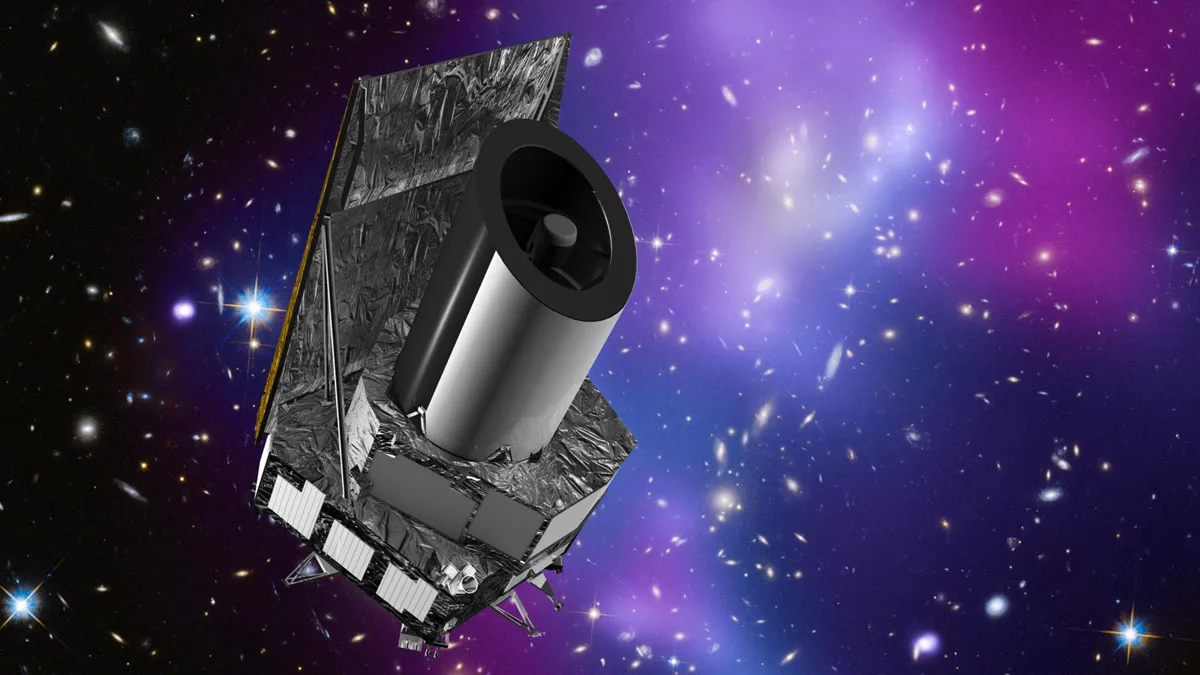Following on from its JUICE mission, and looking to learn more about the workings of dark energy and dark matter throughout the Universe, NASA and the European Space Agency (ESA) is set to launch the Euclid Telescope.
The ESA states that Euclid is “a cosmology survey mission, optimised to determine the properties of dark energy and dark matter on universal scales".
The mission is a collaboration between over 2,000 scientists spread across 16 different countries (13 in Europe, as well as the US, Canada, and Japan). NASA and the ESA have worked together on this milestone mission into the cosmos.
Read on to discover when the Euclid Telescope is launching and to find out how to watch the launch.
When is the Euclid Space Telescope launching?
The Euclid Telescope is scheduled to launch on Saturday, 1 July 2023 on the SpaceX Falcon 9 launch vehicle at 4:11pm BST.
In the USA, the launch is scheduled to take place:
- 8:11am PT (Pacific Time)
- 10:11 CT (Central Time)
- 11:11am ET (Eastern Time – local time at the Cape Canaveral launch site)
The launch of the spacecraft weighing two tonnes in orbit (payload of 800kg, service module of 850kg, 40kg balancing mass, and 210kg of propellant) will be taking place at Cape Canaveral in Florida, USA. If you’re keen to watch the launch live, we’ve got good news for you down below.
How can I watch the Euclid Telescope launch?
You can check out the live stream of the launch below at the times listed above:
You can also watch the Euclid Telescope launch live on the ESA’s YouTube channel. NASA are also expected to stream the launch on its official YouTube channel.
What is the Euclid Space Telescope?
The Euclid Telescope is a spacecraft that has been built and designed to explore the evolution of the dark universe, discovering how it formed and expanded over cosmic history.
To do this, the small spacecraft (4.7m tall, 3.7m in diameter) has been fitted with a 1.2m-diameter telescope, visible-wavelength camera, and near-infrared camera/spectrometer in its payload module. Its service module houses satellite systems, propulsion, and other power controllers.

Powered by this technology, Euclid’s image quality will be at least four times sharper than that achieved by ground-based sky surveys, claim the ESA. Images will be captured in optical and near-infrared light.
It will orbit around the Sun-Earth Lagrange point 2. This will be, according to the ESA, “at an average distance of 1.5 million km beyond Earth’s orbit.” It’s also where you’ll find the Gaia and James Webb Space telescopes (don't worry – it's such a large space that the telescopes won't collide into each other).
Why is it called Euclid?
The spacecraft is named after the Greek mathematician Euclid of Alexandria.
Living around 300 BC, Euclid of Alexandria was the founder of the subject of geometry. As the ESA puts it: “As the density of matter and energy is linked to the geometry of the universe, the mission was named in his honour.”
What is the Euclid Space Telescope trying to discover?
The Euclid Telescope’s mission objectives include:
- Discovering what the structure and history of the cosmic web is
- Learning more about the nature of dark matter and dark energy
- Finding out how the expansion of the Universe has changed over time
- Looking to learn if our understanding of gravity is complete or not
The European Space Agency explains its main objective is “to explore the evolution of the dark Universe.”
Once launched, the Euclid spacecraft will begin to develop a 3D map of the Universe by observing billions of galaxies out to 10 billion light-years, across more than a third of the sky. It’s an expansive and potentially hugely scientifically important project that can help us to understand the dark energy and dark matter of the Universe.
The nominal lifetime of the mission is set for six years, meaning it should come to an end in summer 2029, but that could be extended depending on the amount of cold gas left for propulsion.
Read more:
